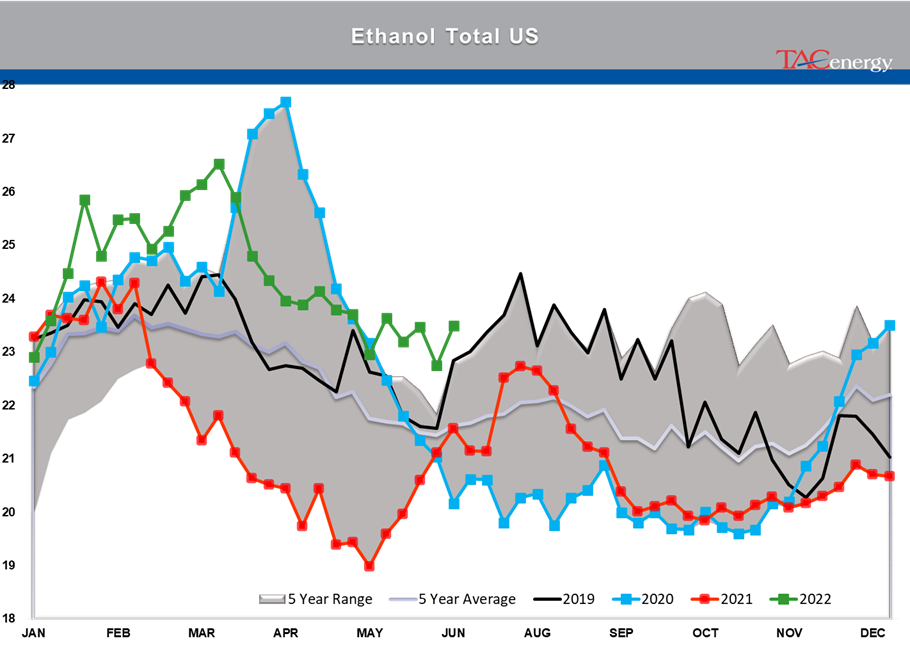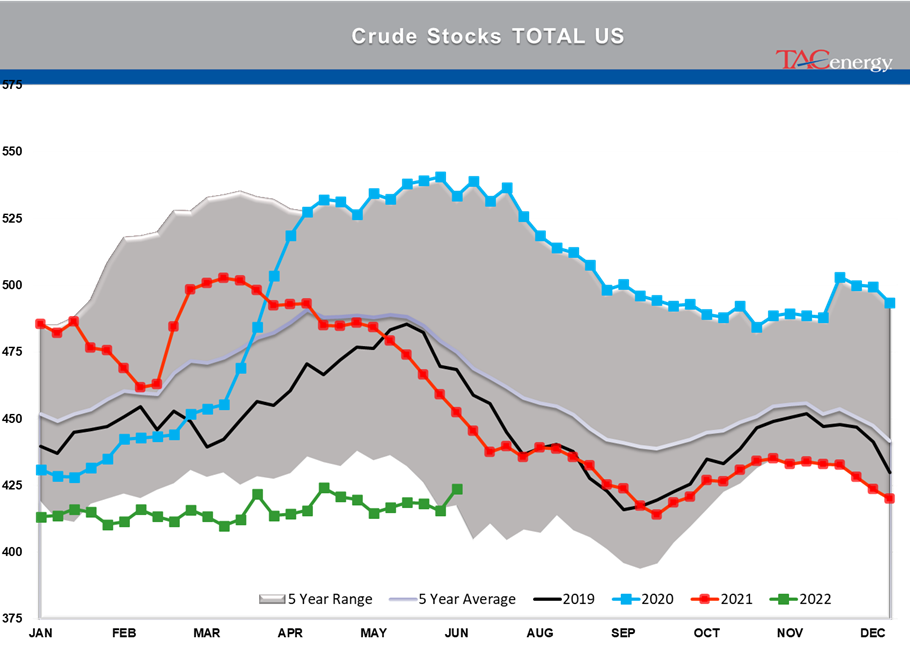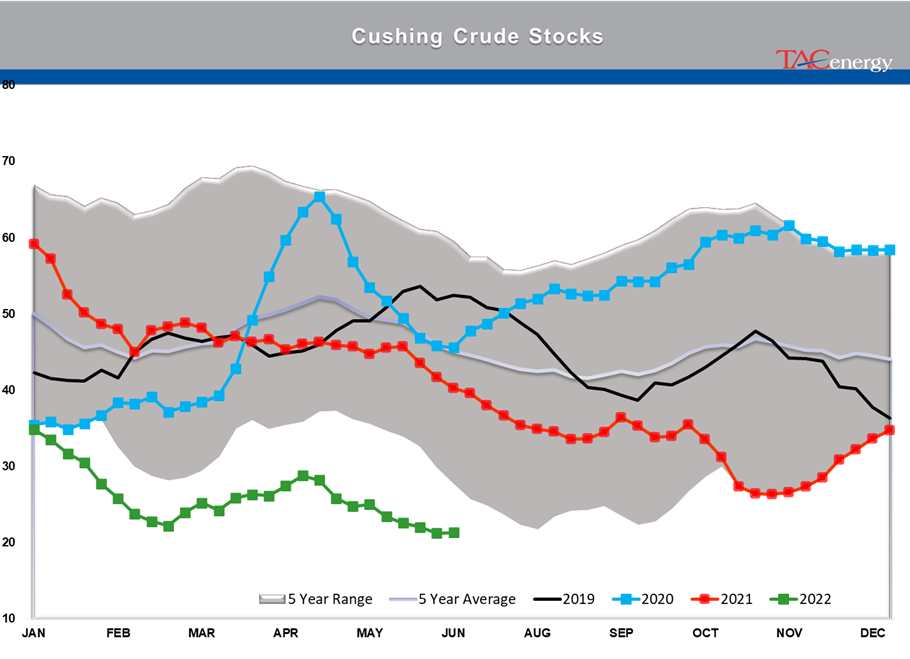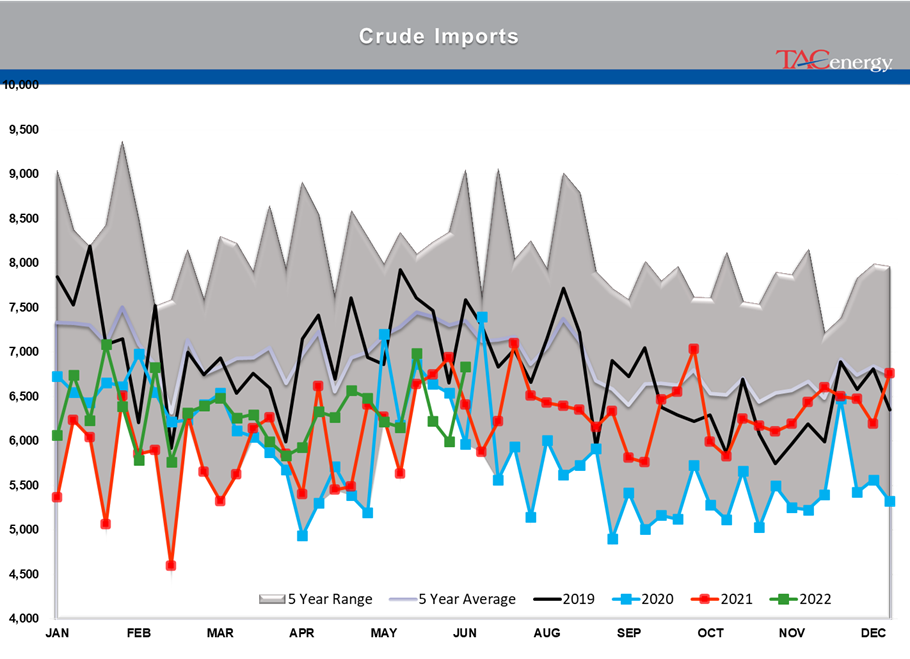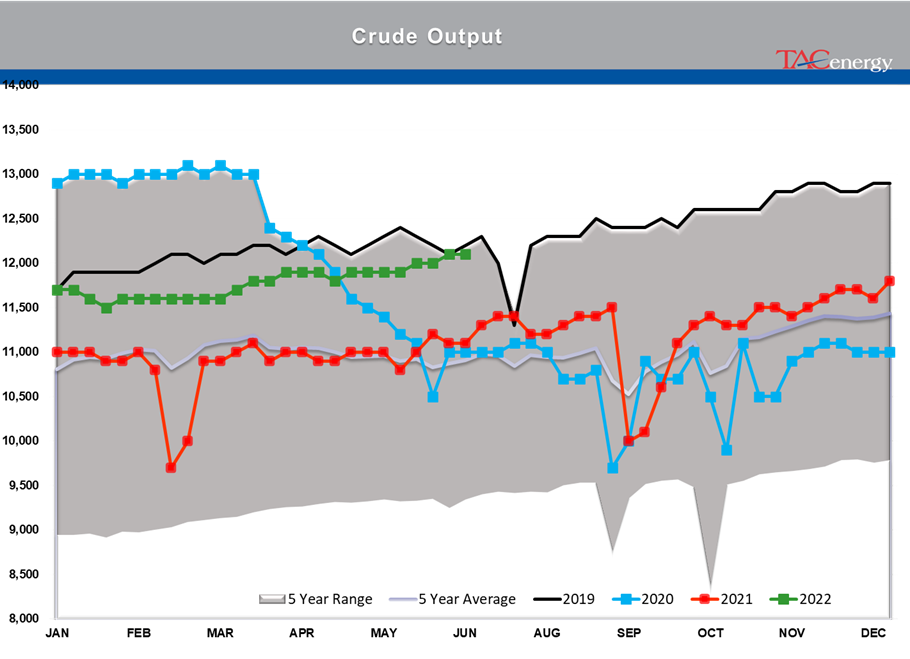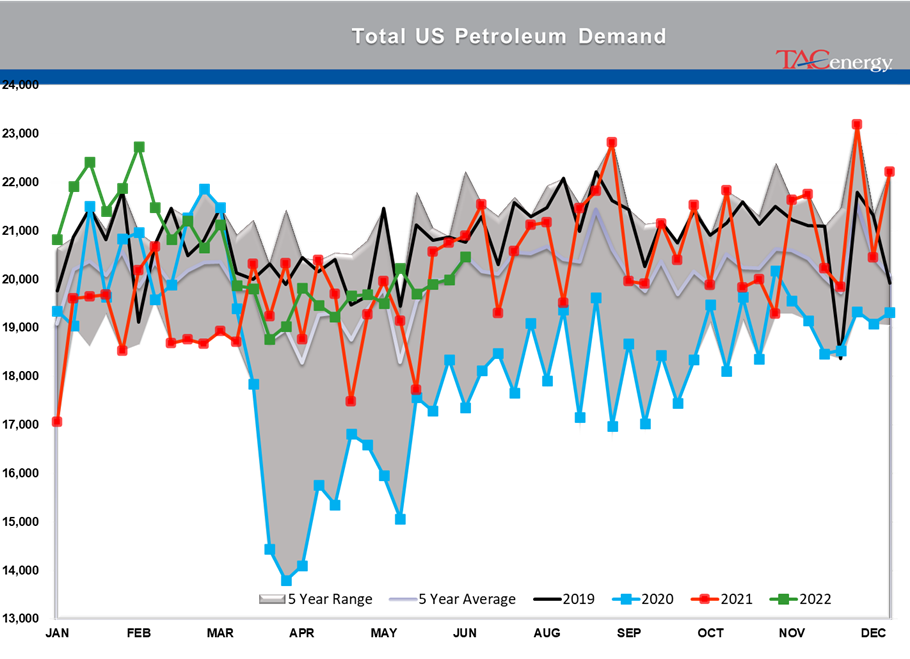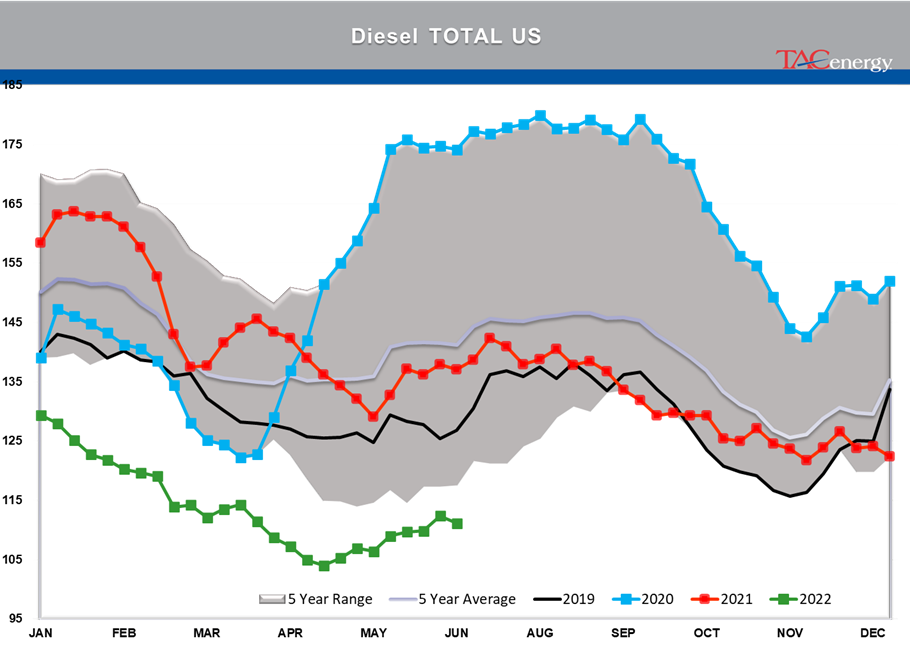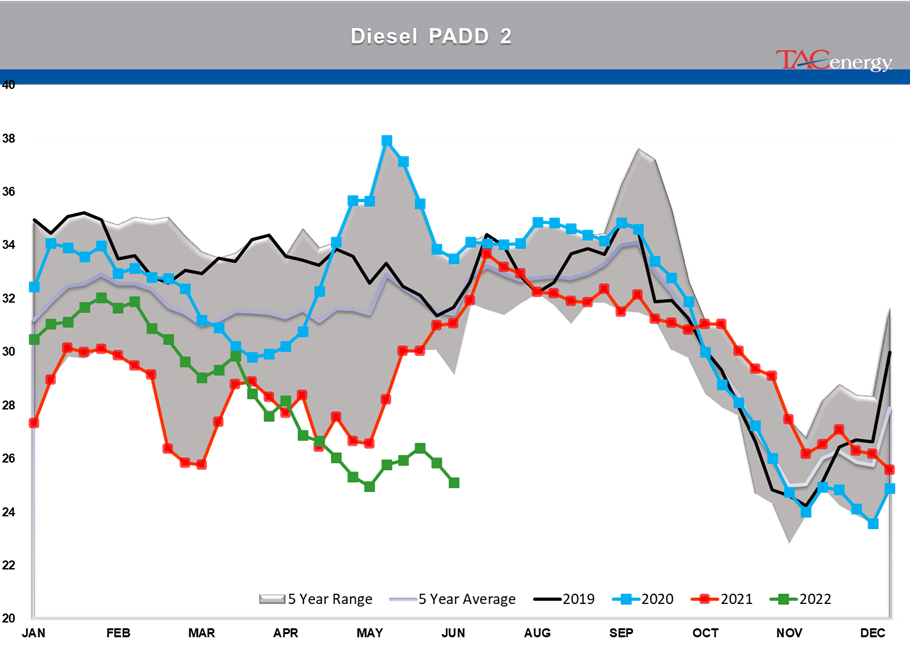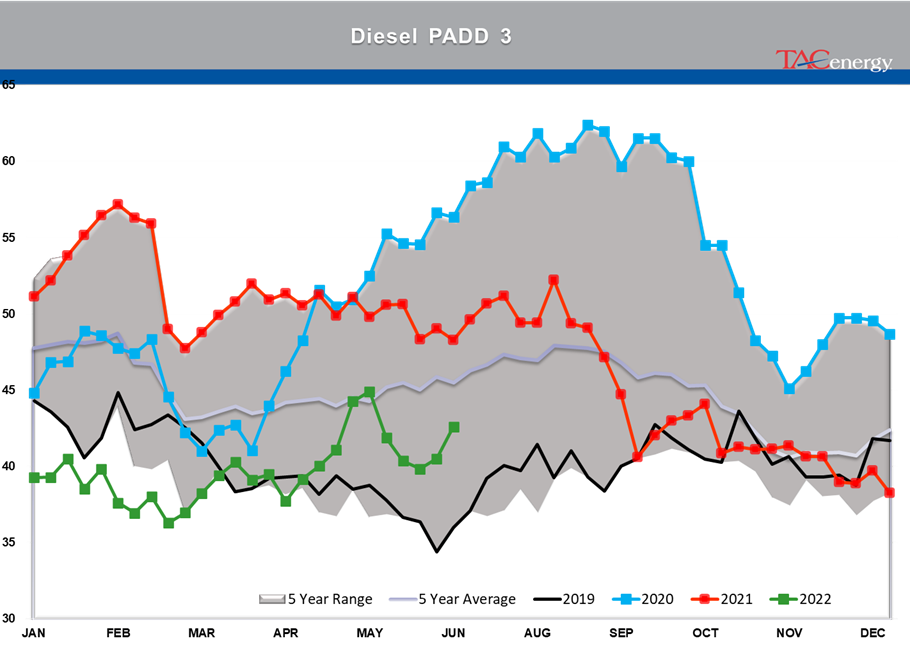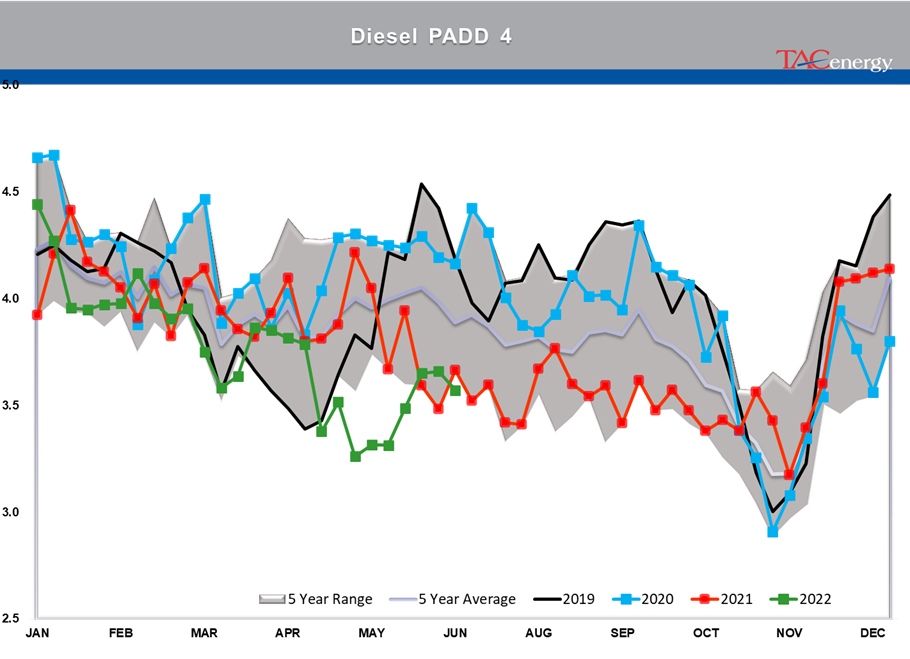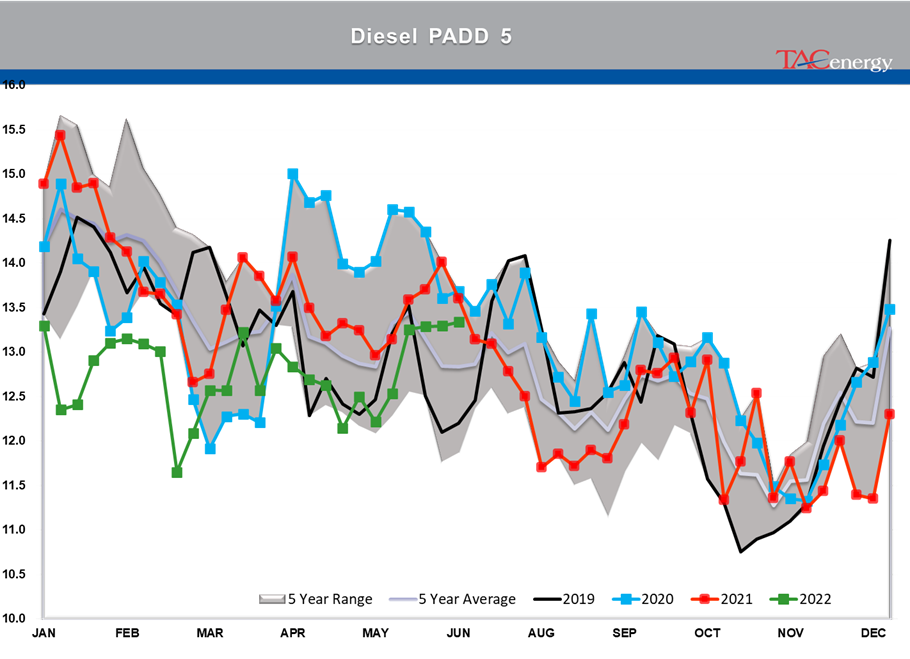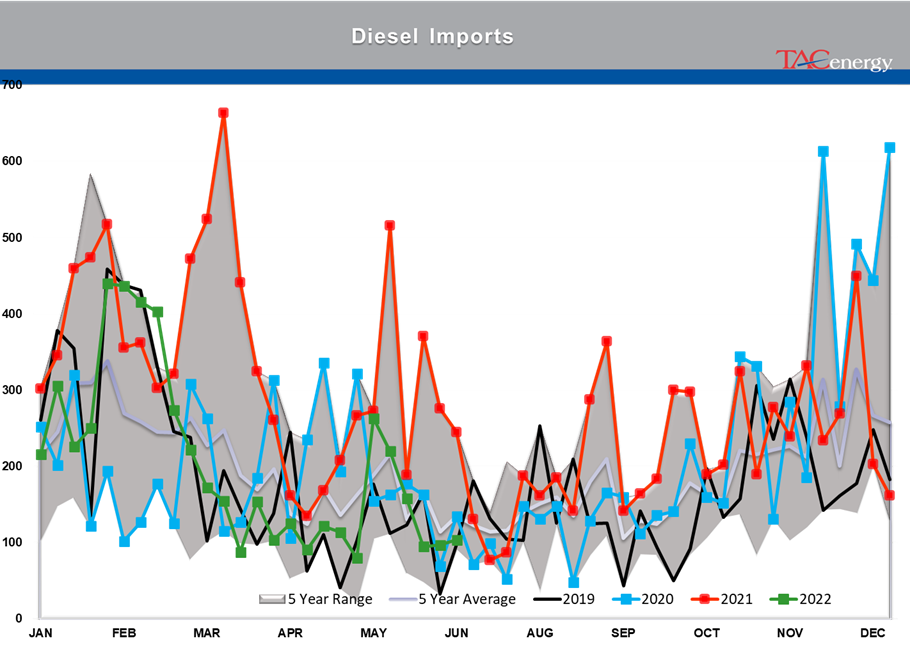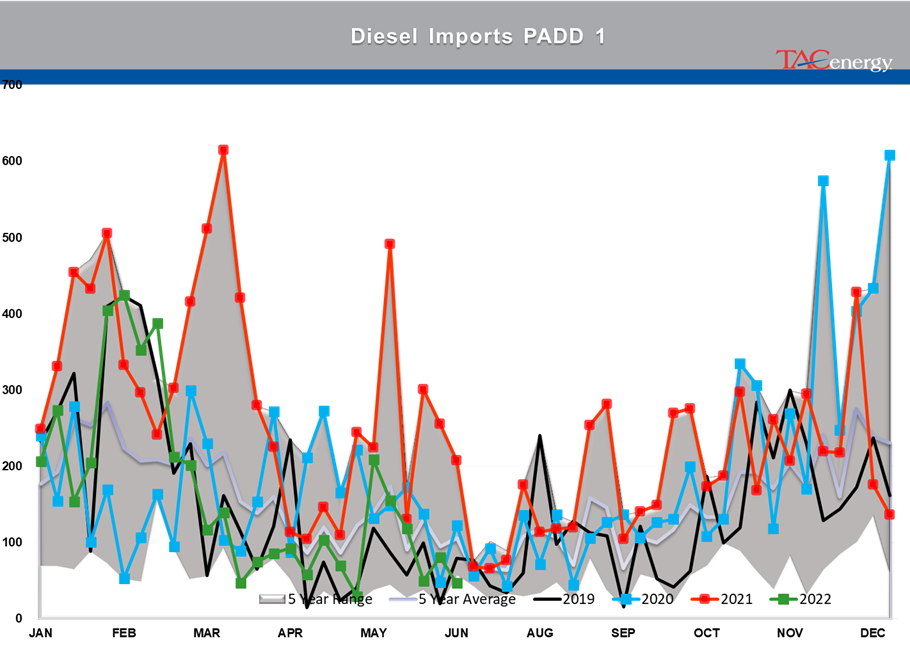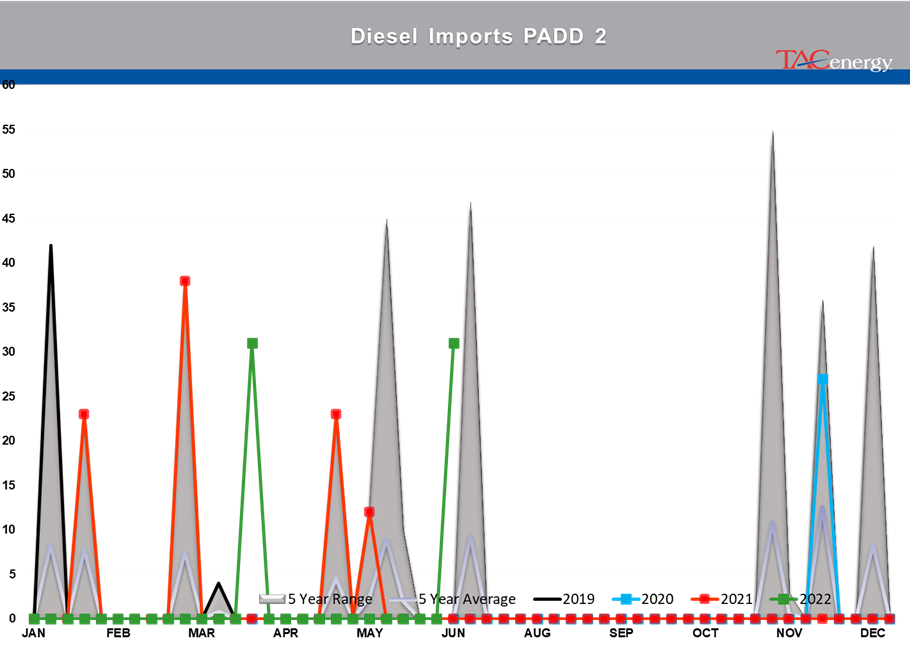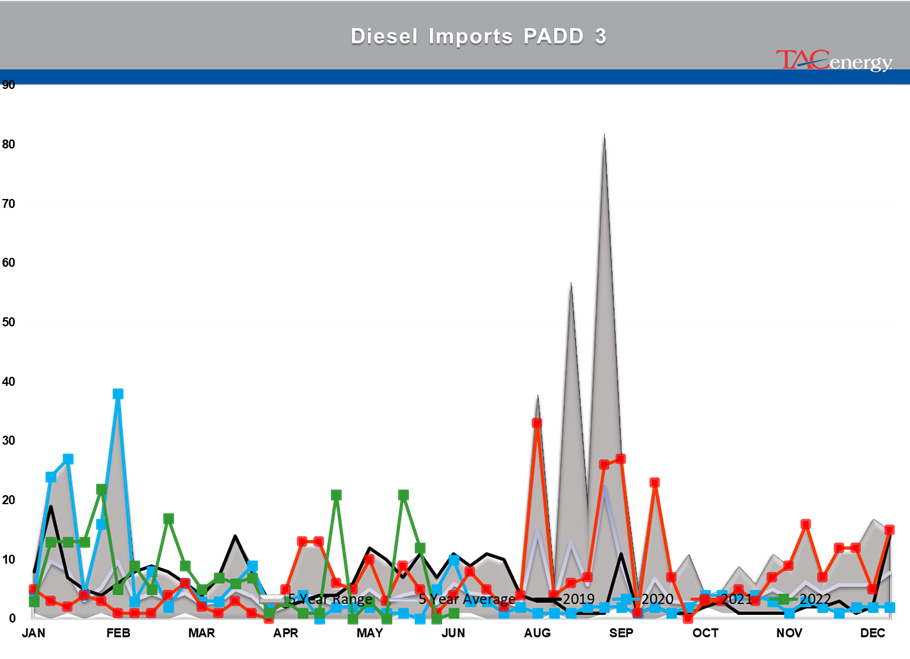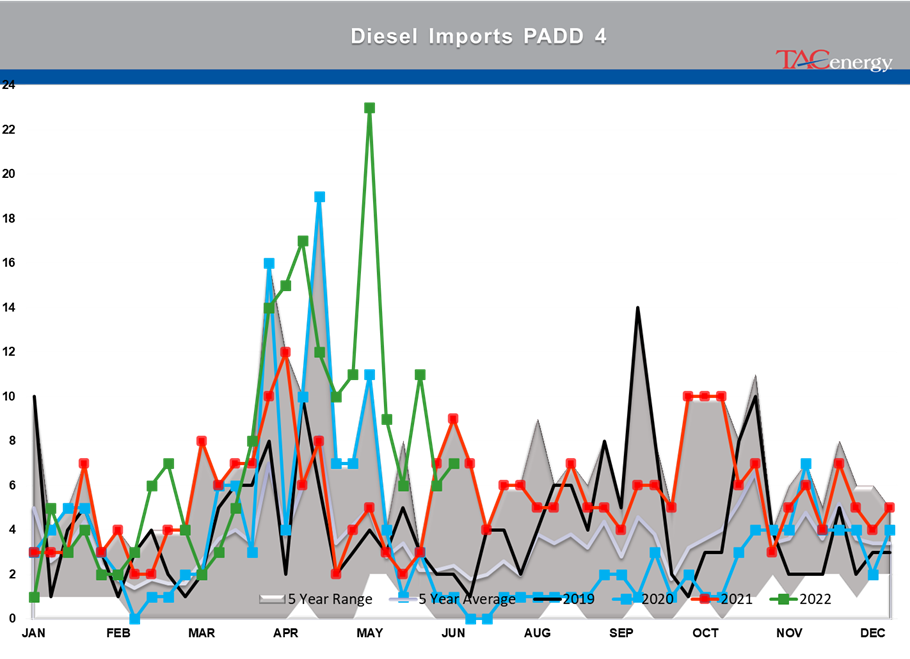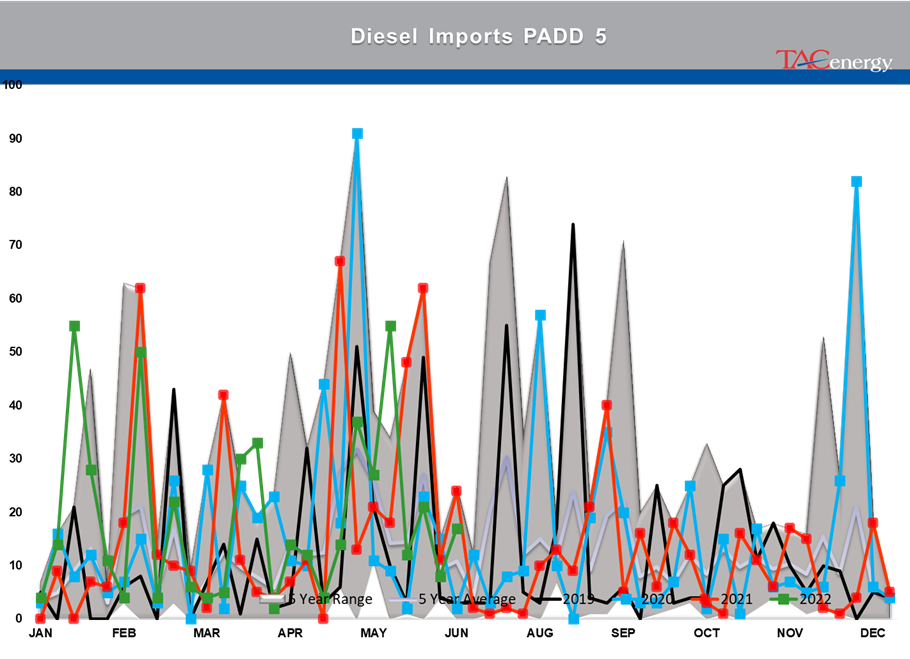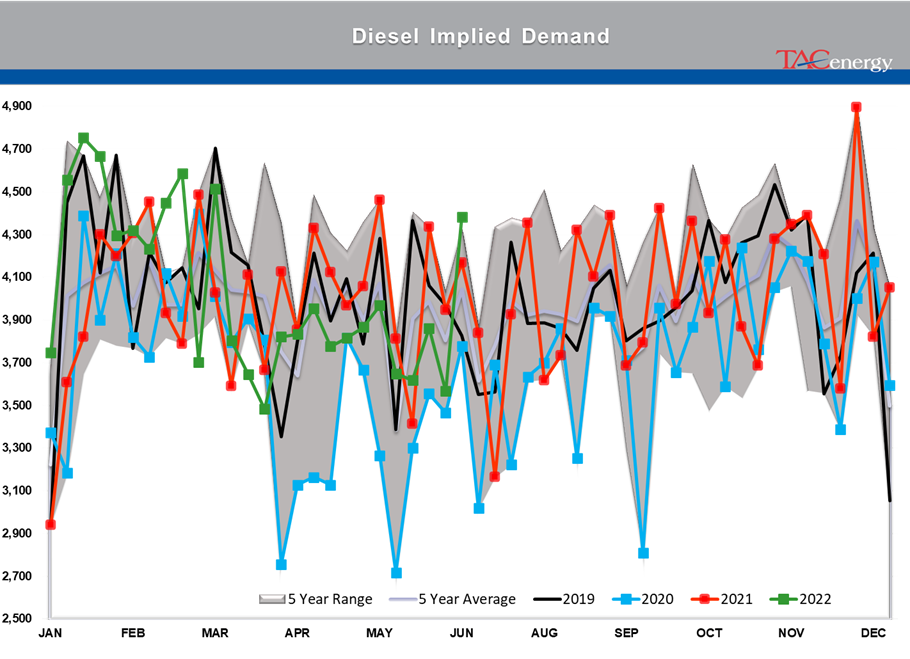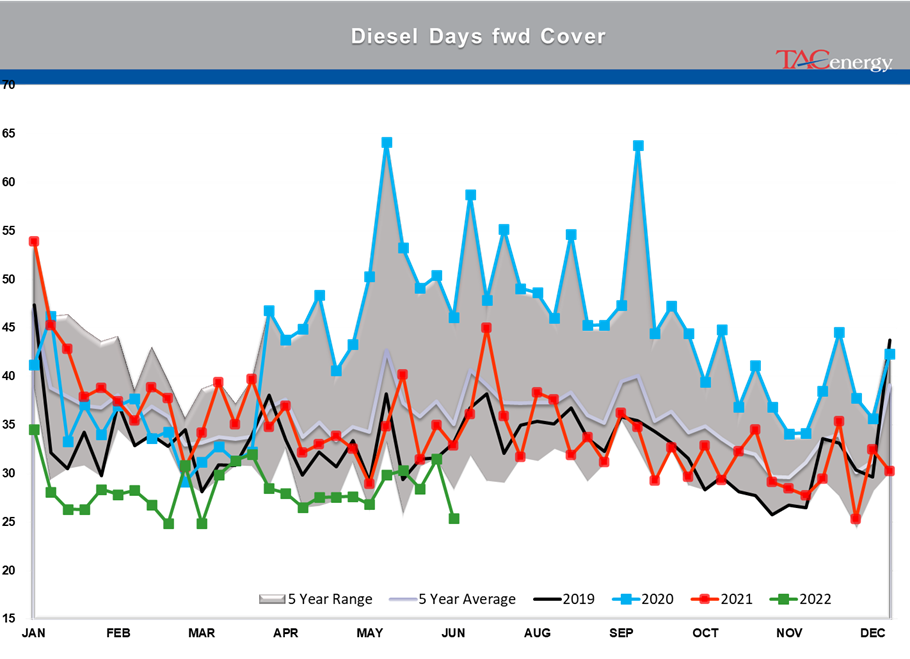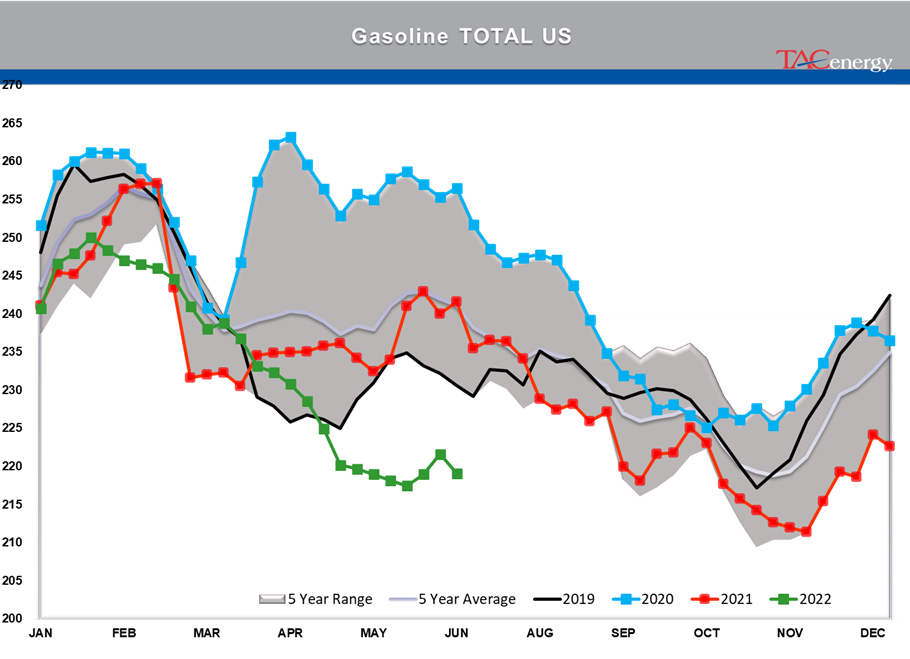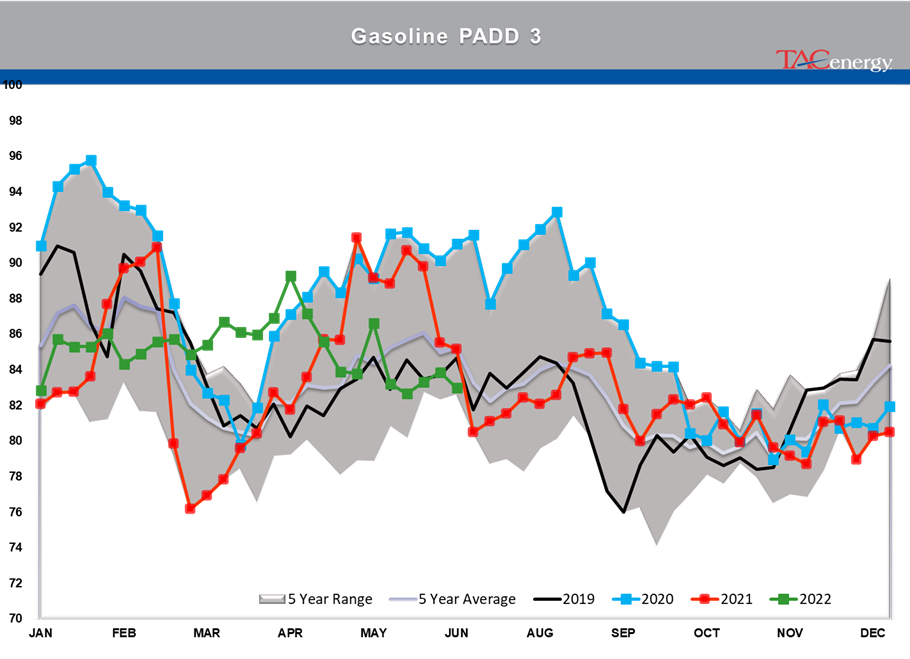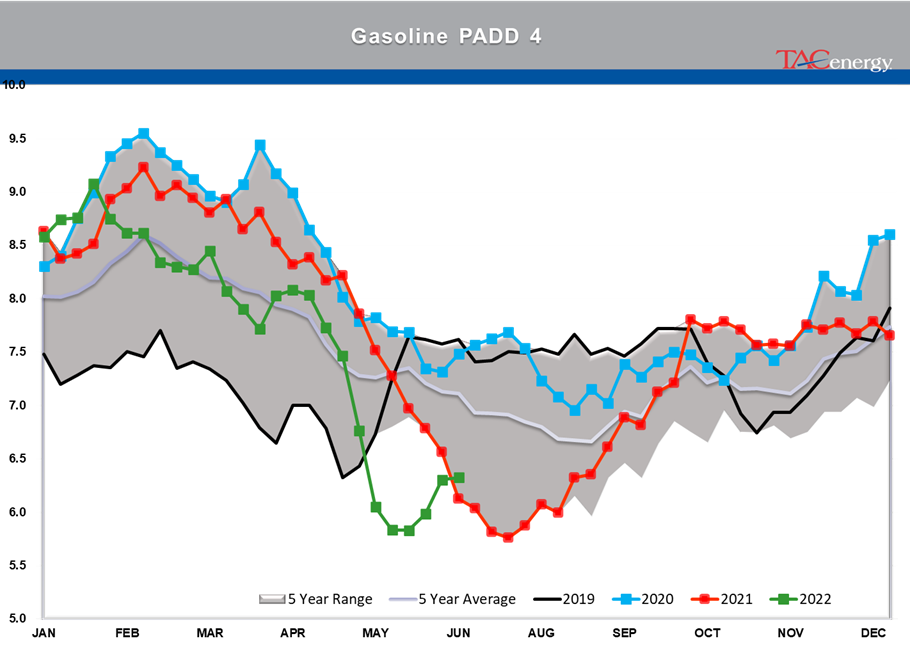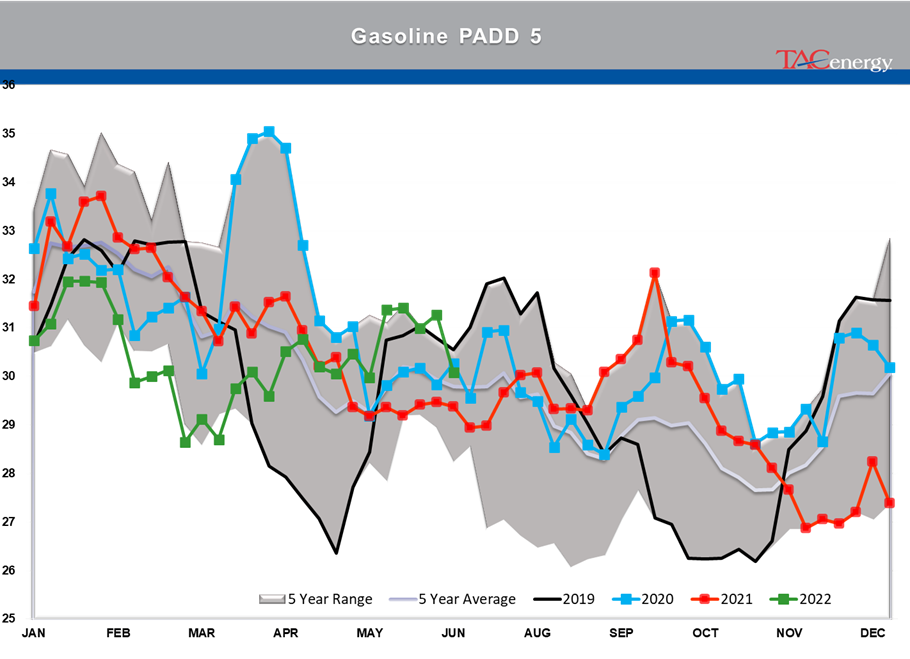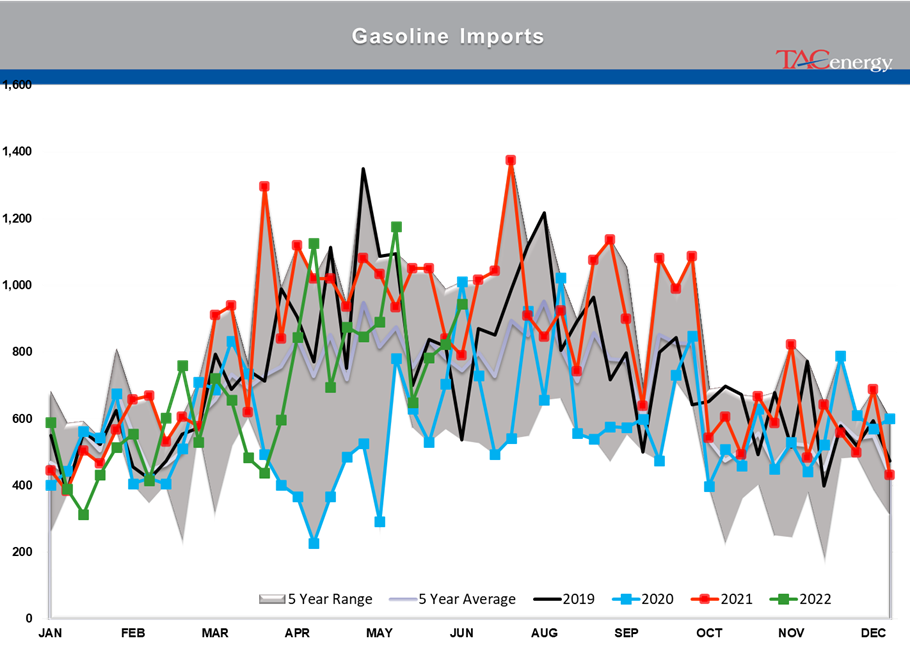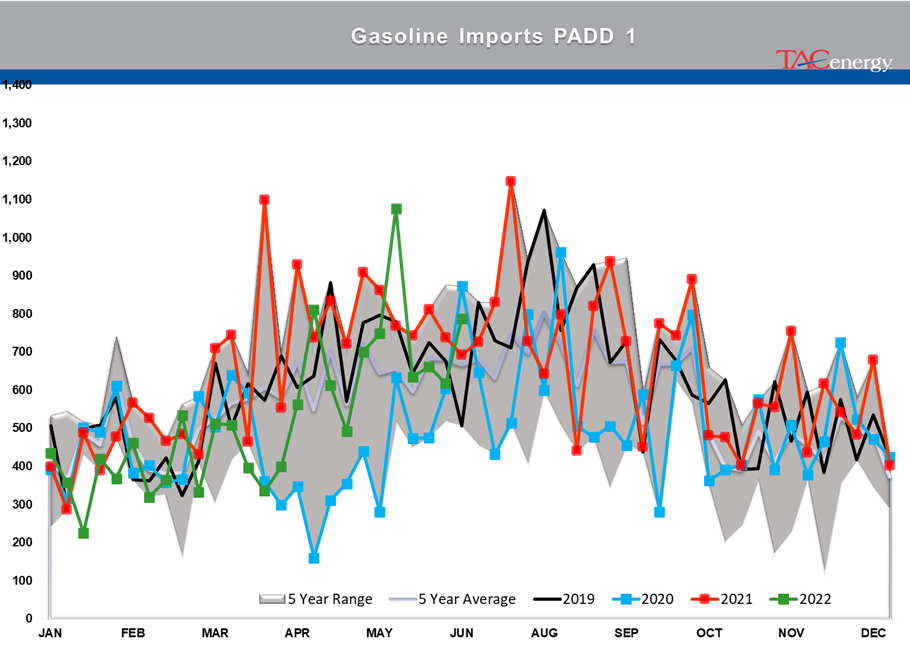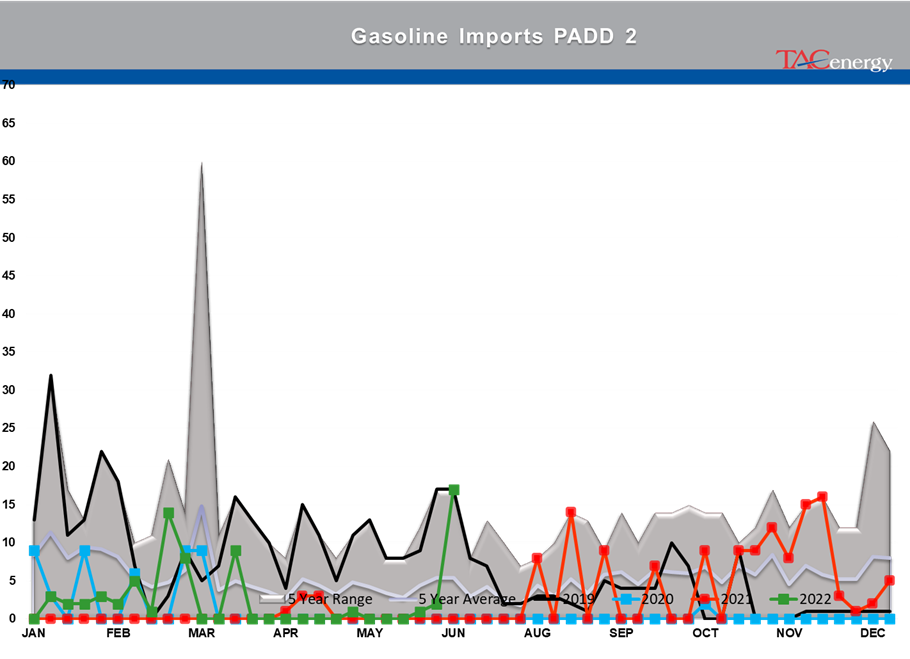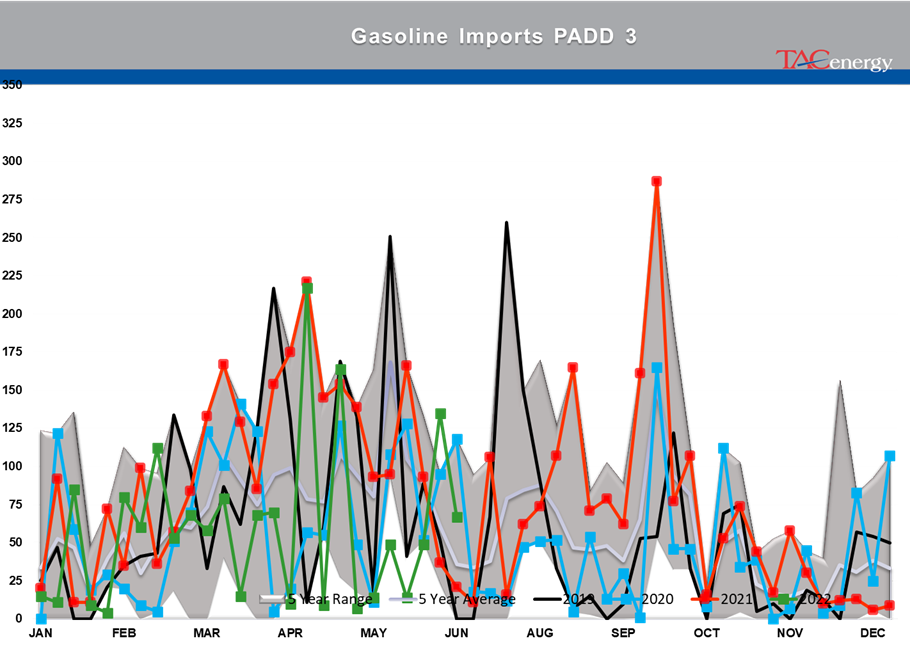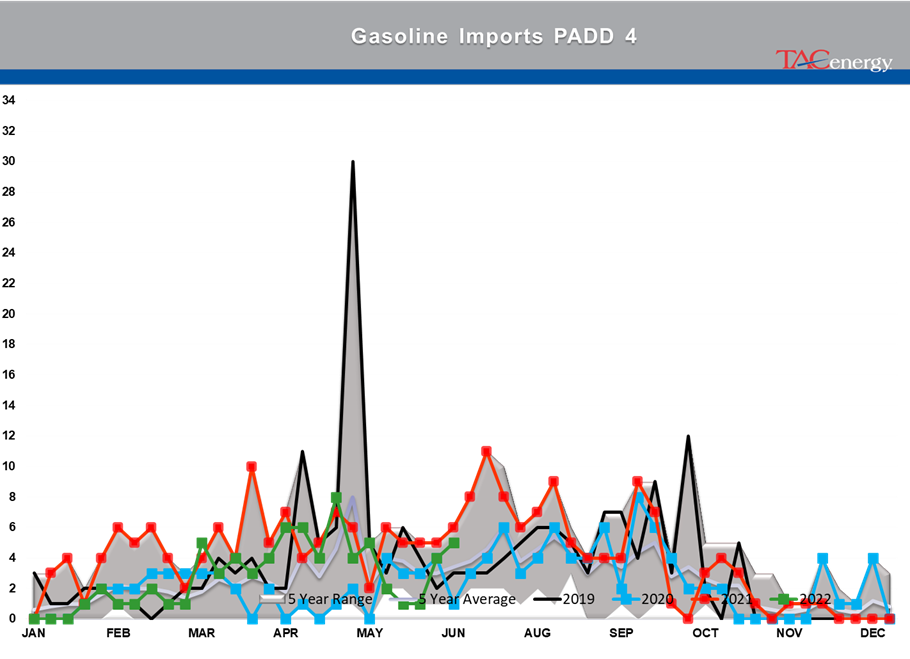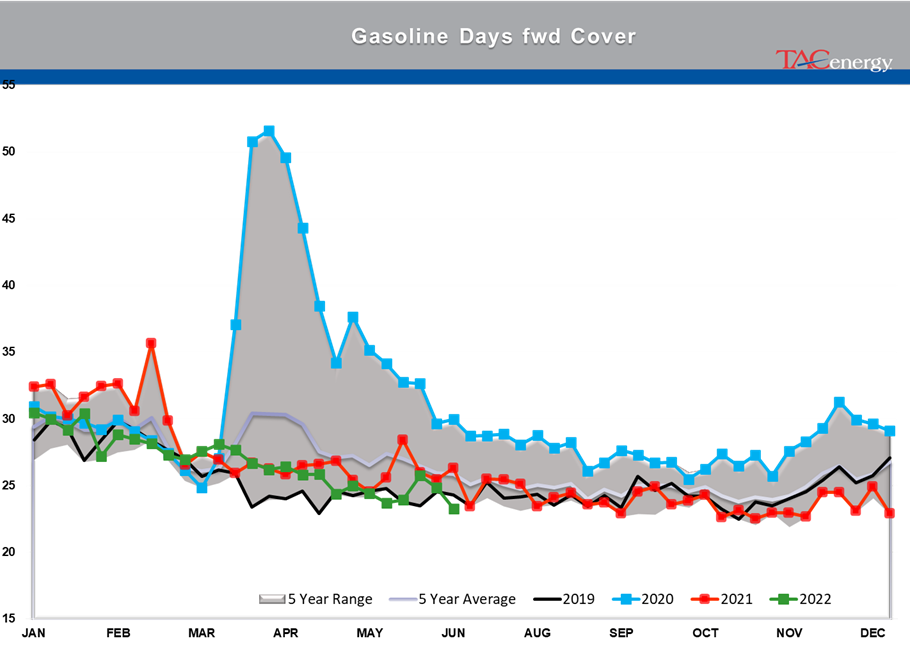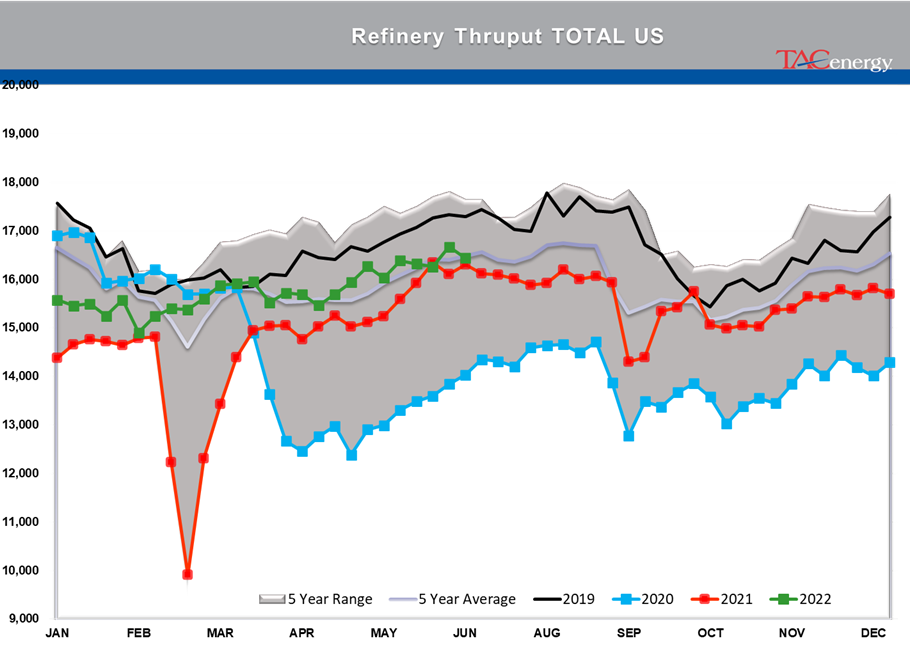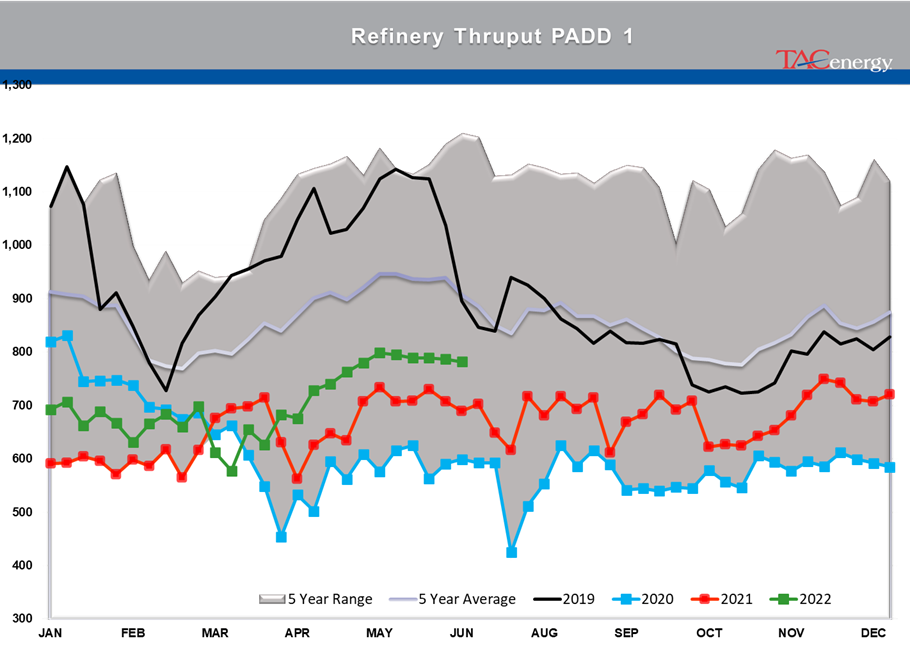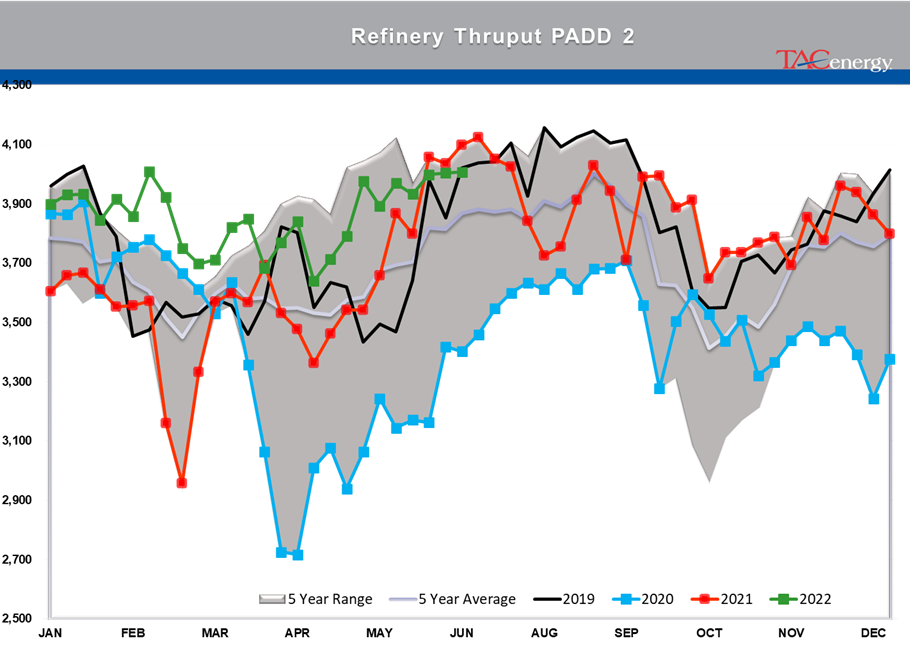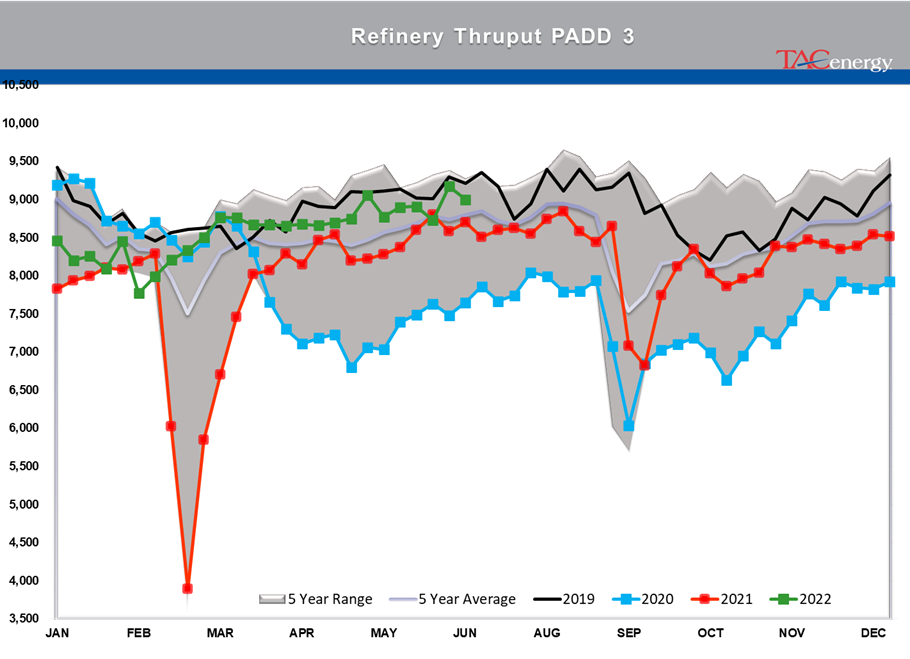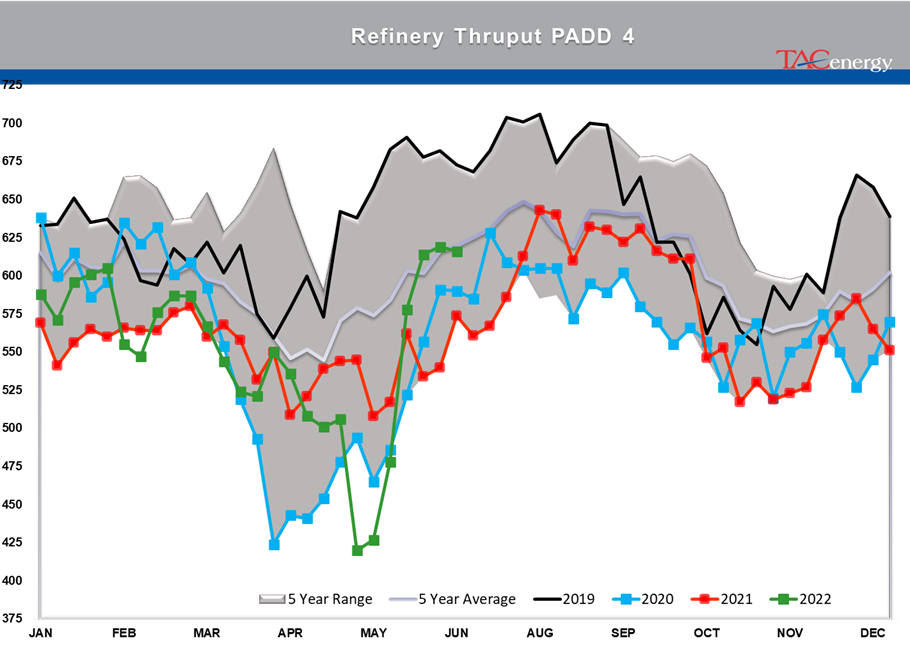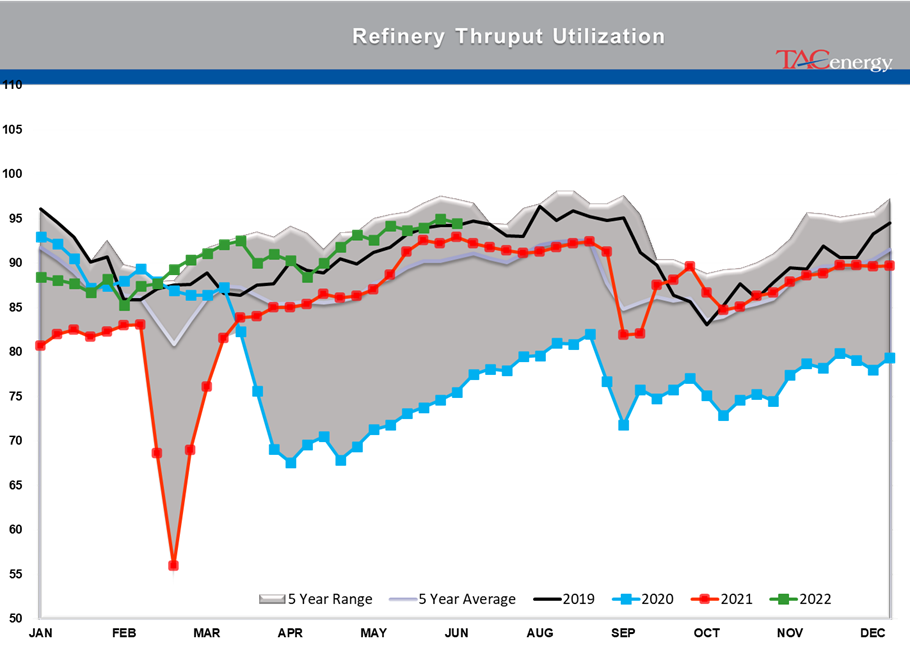Energy Rollercoaster Showing Signs Of Manic Behavior

The energy rollercoaster is in full effect this week as a huge reversal Thursday rally wiped out Wednesday’s heavy losses, only to see another round of selling to start Friday’s trading. If futures settled at current levels they’d still be down more than 30 cents for gasoline and 35 cents for ULSD for the week, even though we had a 20+ cent recovery in Thursday’s session.
This type of manic behavior can be a sign of a market that’s changing direction, as the “weak hands” give way to the “strong hands” who are in the market for the long haul, but the big question is if these huge swings are marking an end to the 7-month bull rally that more than doubled fuel prices, or an end to the 1-month pullback that cut them down by more than $1? For now, short-term charts continue to give slight favor to prices moving lower – even though it’s tough to make a fundamental argument for more selling when you look at the inventory charts below.
US fuel inventories and days of supply for both gasoline and diesel are below the low end of their seasonal ranges, despite refineries running near their max in most regions. Refined products saw a big increase in demand last week, which is largely expected leading up to a major US holiday, but total US petroleum demand is still holding below the levels we saw this time of year in 2019 and 2021.
The West Coast is bucking the trend of the other US regions, with supplies for both gasoline and diesel above their seasonal averages, even though refinery runs remain well below year-ago levels.
Want to know why Group 3 diesel markets went from the weakest in the country for months to one of the strongest this week? Take a look at the PADD 2 diesel chart below.
Equity markets gave up their overnight gains after the June payroll report, which showed another strong month for job growth in the US. For those that remember the QE years of a decade ago when bad economic news was good for the stock market because it meant the FED would print more money, it’s easy to understand why good news on the labor front is bad news for markets because it all-but assures the FOMC will continue raising rates aggressively. While energy markets were already in the red prior to the report, they’ve given up another couple of cents afterward in sympathy with stocks.
Charts from the DOE’s weekly status report included.
Click here to download a PDF of today’s TACenergy Market Talk.
News & Views
View All
Energy Futures Are Caught Up In Headline Tug-O-War This Morning
Energy futures are caught up in headline tug-o-war this morning with Canadian oil production concerns and a positive US GDP report trying to push prices higher while sinking Chinese demand worries and Gaza ceasefire hopes are applying downward pressure. The latter two seem to be favored more so far this morning with WTI and Brent crude oil futures down ~45 cents per barrel, while gasoline and diesel prices are down about half a cent and two cents, respectively.
No news is good news? Chicago gasoline prices dropped nearly 30 cents yesterday, despite there not being any update on Exxon’s Joliet refinery after further damage was discovered Wednesday. Its tough to say if traders have realized the supply situation isn’t as bad as originally thought or if this historically volatile market is just being itself (aka ‘Chicago being Chicago’).
The rain isn’t letting up along the Texas Gulf Coast today and is forecasted to carry on through the weekend. While much of the greater Houston area is under flood watch, only two refineries are within the (more serious) flood warning area: Marathon’s Galveston Bay and Valero’s Texas City refineries. However, notification that more work is needed at Phillip’s 66 Borger refinery (up in the panhandle) is the only filing we’ve seen come through the TECQ, so far.
Premiums over the tariff on Colonial’s Line 1 (aka linespace value) returned to zero yesterday, and actually traded in the negatives, after its extended run of positive values atypical of this time of year. Line 1’s counterpart, Line 2, which carries distillates from Houston to Greensboro NC, has traded at a discount so far this year, due to the healthy, if not over-, supply of diesel along the eastern seaboard.
Click here to download a PDF of today's TACenergy Market Talk.

WTI And Brent Crude Oil Futures Are Trading ~$1.50 Per Barrel Lower In Pre-Market Trading
The across-the-board drawdown in national energy stockpiles, as reported by the Department of Energy yesterday, stoked bullish sentiment Wednesday and prompt month gasoline, diesel, and crude oil futures published gains on the day. Those gains are being given back this morning.
The surprise rate cut by the People’s Bank of China is being blamed for the selling we are seeing in energy markets this morning. While the interest rate drop in both short- and medium-term loans won’t likely affect energy prices outright, the concern lies in the overall economic health of the world’s second largest economy and crude oil consumer. Prompt month WTI and Brent crude oil futures are trading ~$1.50 per barrel lower in pre-market trading, gasoline and diesel are following suit, shaving off .0400-.0450 per gallon.
Chicagoland RBOB has maintained its 60-cent premium over New York prices through this morning and shows no sign of coming down any time soon. Quite the opposite in fact: the storm damage, which knocked Exxon Mobil’s Joliet refinery offline on 7/15, seems to be more extensive than initially thought, potentially extending the repair time and pushing back the expected return date.
There are three main refineries that feed the Chicago market, the impact from one of them shutting down abruptly can be seen in the charts derived from aforementioned data published by the DOE. Refinery throughput in PADD 2 dropped 183,000 barrels per day, driving gasoline stockpiles in the area down to a new 5-year seasonal low.
While it seems all is quiet on the Atlantic front (for now), America’s Refineryland is forecasted to receive non-stop rain and thunderstorms for the next four days. While it may not be as dramatic as a hurricane, flooding and power outages can shut down refineries, and cities for that matter, all the same, as we learned from Beryl.

